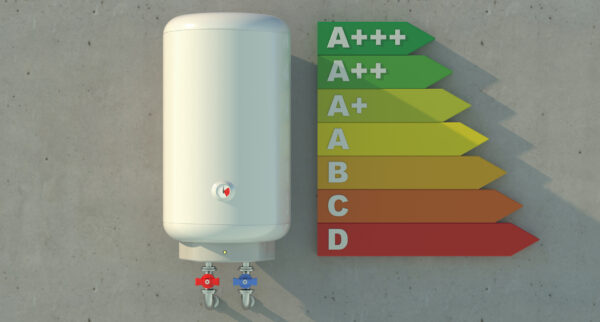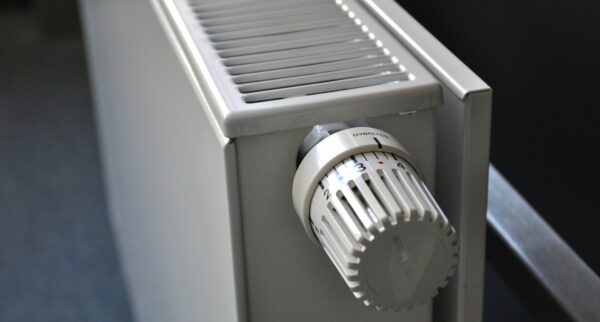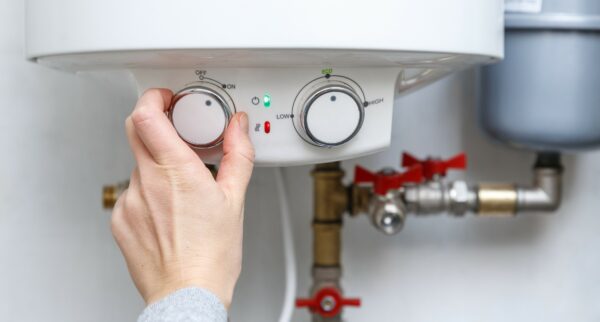Call us today 0207 32 32 999
Written By: JustBoilers.com Experts | Last Updated: May 2022
It’s wise to treat radiators with caution while they circulate hot water from the gas boiler. However, once we turn them off they are essentially just cold pipes inside a thin metal box and therefore harmless.
With the radiators turned off and cold, it’s perfectly safe to paint them any colour you want. But why would you want to do that in the first place? Well perhaps you don’t like the colour, it is looking grubby, or showing signs of rust.
Table of Contents
TogglePainting a Radiator – Why do it?
You can paint your radiators to make them the feature of the room, blend them into the colour scheme or complement your theme. Maybe they just need to be freshened up because they’re looking a bit dull!
Maybe you’d like a pop of colour in your magnolia front room or to use the radiator to add texture to your already bold wall.
What You Need Before You Start
- Dust mask
- Safety goggles
- Protective gloves
- Synthetic flat paintbrush
- 120-grade sandpaper
- Cloth
- Protective sheets
How to Paint a Radiator: Project Scope and Preparation
This project includes redecorating the visible parts of a radiator. If yours needs surface rust removal at the back, then you’ll have to remove the radiator first. After that, the procedure is the same.
We’ll take you through the entire process step by step, but first, you need to turn the radiator off and allow it to cool down. While you wait for this to happen you have an opportunity to do three easy things by way of preparation.
- Place a dust sheet on the floor under the radiator to catch dust and paint spills
- Slide cardboard behind the back of the radiator so you don’t mess the wall up
- Wash the radiator down with warm water and mild detergent. Leave it to dry.
Read on as we explain how to deal with any spots of rust, and prime your radiator before you brighten up your room by applying the colour you always wanted. You should never need to pay a decorator to paint a radiator again, once you know the steps below.
Step # 1: Prepare the Radiator for Repainting
Any paint job is only as good as the surface preparation. Make sure the radiator is completely cold before you start, and everybody knows not to turn it on again until you say so. Then follow these simple steps. Take your time and get everything as perfect as you can.
- Clean the surface carefully to remove every speck of grease, dust and grime. Dry it carefully. Wait a few hours before you rub the surface down gently with fine sandpaper to help the new paint stick.
- You must sand away every speck of rust until the shiny metal shows through. If you don’t do this then the rust will return, spoil your new paint job and you’ll have to start all over again.
- Vacuum any grit and dust carefully before wiping the surface down with a damp cloth. Any grit will show through the paint and you will be sorry you missed this step.
It’s absolutely essential you start the actual painting within the next few hours. Raw metal oxidises in the presence of oxygen and the rust could reappear overnight.
Step # 2: Prime the Radiator for the Top Coat of Paint
First, check the safety dust sheet and the cardboard behind the radiator are still in the same position you laid them. Then put on old clothes so you don’t spoil your ‘sunday best’ in case you make a mistake. In terms of choice of undercoat you broadly have these options:
- An anti-rust primer if you sanded away a few rust spots
- A standard primer undercoat if the radiator is in good condition
Apply the undercoat using an angled radiator brush to get into tight corners. Work steadily to achieve an even coat. Catch any paint runs as soon as possible after you spot them.
Step # 3: Apply the Top Coat to the Radiator
We recommend you choose specialist radiator paint if you are using white or a light colour to prevent it from yellowing. Otherwise, these are probably your choices.
- Solvent-based paint such as satinwood or non-drip with a widespread of colour choices
- Clear radiator overcoat that allows you to paint a radiator using emulsion paint with a clear coat afterwards
- Specially-formulated radiator spray paint. However in this case you may not have a wide range of colours
Wondering how to paint behind a radiator? This is possible without removing it if you pivot the radiator forwards on it’s valves or use a long-reach radiator brush.
Expert Tips for How to Paint a Radiator with Spray Paint
We recommend you practice with cheaper aerosol spray paint first before tackling your carefully prepared radiator. Make sure you have sufficient ventilation, mask the surrounding area thoroughly, and wear a face mask to protect your eyes and avoid breathing the fumes.
Shake the aerosol can a hundred times before starting, and ten times regularly while you work. Test your paint first before applying many thin layers. Begin and end each spray at the same point as you cover the entire radiator surface. Wait the recommended time before adding additional coats.
Always keep the can moving to avoid bubbles and runs. When painting a radiator, wear gloves to avoid using solvents to remove paint that can cause annoying skin irritations. The more coats of paint you apply the deeper will be the sheen.
Top Tips for Using Tinned Paint and Brushes
You could achieve as good a result with a new paintbrush if you work carefully. Just remember to shake the can well and give it a thorough stir with a paddle. Thoroughly cover the radiator surface without applying so much paint that it runs. That angled radiator brush will come in handy again.
We recommend applying at least two top coats with an interval of 24 hours drying time. Summer is the best time to paint a radiator, when you can do without it for a day or two, and open the windows to vent the paint smell when you turn it on again.
Now you know how to paint a radiator – what colour are you going to go for?





